READY TO GET STARTED?
REQUEST A FREE ESTIMATE
Fill out the form below or call (888) 466-7849 for a free, no-obligation estimate.
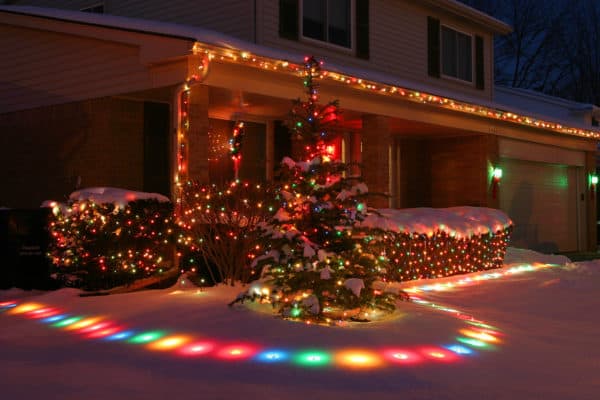
With the holidays looming near, you may be looking for areas where you can cut back on costs to give you that extra holiday cushion. We have a few tips you can consider that can not only help you go green but also put some extra cash back in your pocket!
Properly insulating your home can help energy efficiency throughout, helping you save money in the long run, not just the holiday season. Let Northwest help you go green and save green! Call and schedule your free inspection today!

Green pest control provides an eco-conscious option to traditional pest control and is especially beneficial in homes and businesses that house the young, the elderly, pets, and those with compromised immune systems or allergies. But are they really effective?
The answer is yes. Green pest control typically utilizes botanical and/or earth-based pesticides and a targeted approach when applying them, focusing on eliminating and controlling pest populations through both preventative measures and purposeful product application, based on your specific pest issues.
One important component of any green pest control program is Integrated Pest Management (IPM). IPM doesn’t just focus on eliminating pest populations but also on identifying and getting rid of the environmental factors that are allowing the pests to procreate and thrive, as well as preventative measures to prevent re-entry. IPM can actually cut back significantly on the amount of pesticides used in treatments (by more than 90%!).
Once green pest control companies identify the problem pests and decide that action is required, there are several methods that are used to eliminate them:
Once you make the decision to invest in a green pest control program, contact an exterminator near you, and they will provide you with the following:
You May Also Be Interested In:
Wildlife Control: Unusual Winter Wildlife
What Are Your Termite Treatment Options?
Pest Control: Does The Weather Affect Pests?
Exterminating: The Last Of The Creepy Crawlers
Fall Lawn Care
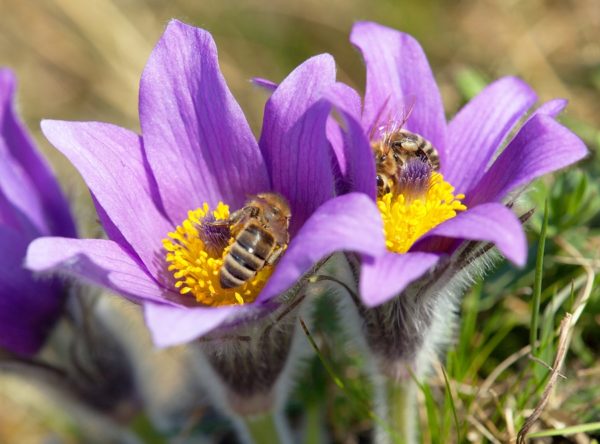
Pollination is when pollen grains are transferred from one flower to another. Pollination allows plants to produce seeds which is how they reproduce. Pollinators are animals and insects that are responsible for helping with the pollination of over 80% of the world’s flowering plants. Animal pollinators are vital in the reproduction of flowering plants and the production of most fruits and vegetables. They accomplish this by getting their food from flowers (think nectar and pollen) and collecting pollen on their bodies in the process. They then move on to another plant and leave the hitchhiking pollen behind, providing the new plants with the pollen they need to reproduce.
Some of the most common animal pollinators that come to mind are bees and butterflies. But did you know there are several other animals you might not have known who are expert pollinators? Here are a few animal pollinators along with the types of plants they pollinate:
Ants love nectar. Because they don’t fly they have to crawl into flowers to get to this nectar. Once inside the flower, pollen sticks to their bodies, allowing them to transfer it to other flowers when they move on. Tropical plants have nectar outside their flowers to attract ants to them. They then use these ants as “protectors” from other insects.
Ants pollinate flowers that:
Bats are known as one of the “night shift” pollinators. They are most common in tropical and desert climates. They are prevalent in the southwest US, Africa, Southeast Asia, and the Pacific Islands as pollinators. In fact, mangoes, bananas, and guavas depend on bats for pollination. In the US and Central America, the agave plant (which is used to make tequila) and the Saguaro cactus are also dependent on bats for pollination.
Bats pollinate flowers that:
Bees are known as the “champion” pollinators and are also the most common. There are over 4000 species of bees in the United States alone. Bees purposefully visit flowers to collect pollen and nectar which they use to feed themselves and their young. Many flowers that bees pollinate have an area of low UV reflection near their centers. Humans can’t see UV reflection so we don’t notice them. Bees, however, use them as a target to guide them to the center of the flower.
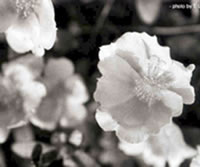
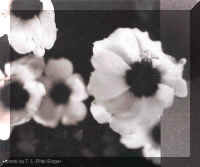
Human Perspective Bee Perspective
Photos courtesy of Apalachicola National Forest.
Bees pollinate flowers that:
Beetles were among the first insects to visit flowers. They are important pollinators for ancient species like magnolias. They are known as “mess and soil” pollinators because they eat through flower petals to get to the nectar and then defecate inside the flowers. Fossil records show that beetles were abundant as far back as 200 million years ago.
Beetles pollinate flowers that:
Birds are important pollinators of wildflowers. Hummingbirds are the most important bird pollinators in the United States. In the eastern United States there is only one species that acts as a pollinator and that is the ruby throated hummingbird. Hummingbirds have good eyesight and are extremely attracted to red flowers. They use their long bills to collect nectar and the pollen then dusts their heads and faces.
Hummingbirds pollinate flowers that:
Butterflies are very active during the day. Their body structure doesn’t allow them to pick up as much pollen as bees and other insects but they can see red where bees can’t. Butterflies produce scents that attract other butterflies of the opposite sex. This scent they produce smells like the flowers that they are attracted to.
Butterflies pollinate flowers that:
Two winged pollinators include flies, gnats, and mosquitoes. These insects aren’t as fuzzy as bees so they don’t pick up as much pollen. They are still, however, important pollinators, especially for some species of orchids.
Two-winged insects pollinate flowers that:
Moths are the other member of the pollination “night shift” along with bats. Some moths are also active as pollinators during the day. The yucca plant is one important plant that is dependent on moths for survival.
Moths pollinate flowers that:
Wasps look like bees but have much less hair. This makes them less efficient as pollinators because pollen is less likely to stick to their bodies. Wasps need pollen and nectar for energy. Fig wasps are responsible for pollinating almost 1000 species of figs.
Wasps pollinate flowers that:
There are several other uncommon pollinators. Lizards, geckos, and skinks can be pollinators. They climb inside flowers to drink the nectar and the pollen then sticks to their scales. Lemurs and possums can also pollinate. They use their snouts and tongues to get nectar from plants and then have their faces and snouts dusted with pollen.
We consider most of the animals and insects that are pollinators as nuisances and pests. As much as we don’t want them in our homes, they do play a very critical role in the survival of plants and food. It is important that while we should take steps to prevent them from invading our homes, we should be very careful with how we handle them should they make themselves at home in our area. If you suspect you have a problem with any of these pollinators, contact a professional pest control company who can give you a thorough evaluation and provide you with a treatment plan that both benefits you and protects these important species.

Even though we’re well into the winter season, it’s never too late to weatherproof your home. These easy fixes will not only seal up your home and keep it nice and warm, they will also help save you some money on your energy bills this year. Check out these simple winter weatherproofing tips so you’ll be prepared just in case the groundhog DOES see his shadow this year!
Check your doors and windows to make sure they are in good repair. Insulate your doors and windows with weatherstripping. Use transparent weather sealant tape for any areas where the weatherstripping will be applied directly to the door or window. This tape can also be used to temporarily seal any cracked windows until you can permanently replace them. Use door sweeps on the bottoms of exterior doors to keep cold air from coming in. You can install them with nails or with adhesive.
Attics and crawlspaces are notoriously cold areas of your home. Thermal accoustical pest control (TAP) insulation is an energy star rated attic insulation that provides several benefits to your home. TAP eases the burden on your heating and cooling systems, making them more efficient and keeping the temperature in your home more consistent throughout the year. TAP also leads to a 20-38% savings on your energy bills AND protects your home against pests including roaches and ants. Finally, TAP is treated with a fire retardant that limits the spread of fire in your home.
Complete CrawlSpace enclosure is another way to weatherproof your home. Enclosing your crawlspace with Complete CrawlSpace increases energy efficiency, prevents mold growth, and completely closes off your crawlspace to pests. This can also save you up to 18% on your energy bills each year.
Most garages aren’t insulated which makes them very chilly spaces in the winter. Install weather sealing strips on the bottom of your garage door. These strips not only keep out cold air but also keep out rain and pests as well.
Outlets and switches on the exterior walls of your home can be a big source of cold air. One solution is to install foam outlet and switch sealers. These can be installed by simply turning off the power, removing the outlet or switch cover, applying the foam sealers, and reinstalling the covers.
Hardwood and tile floors can be especially cold in the winter. Curtains and rugs can make a big difference when it comes to heating your home. if you have drafty windows, hang some heavy curtains to keep the cold air out. Use area rugs on hardwood floors and in bathrooms with tile floors to help keep them warm.
Air conditioning units in walls and windows give a direct path for cold air into your home. One solution is to install a heavy duty polyethylene and vinyl cover that fits around the outside of the unit. You can also wrap the inside grill with plastic sheeting and double sided tape. Consider installing a programmable thermostat which will automate your interior temperature. This can save you up to $200 per year in heating and cooling costs.
Insulate your hot water heater with a water heater insulating blanket. This saves energy by reducing heat that is lost through the sides of the hot water heater by 25-40%. This reduction in heat loss can also lead to savings on your energy bills.
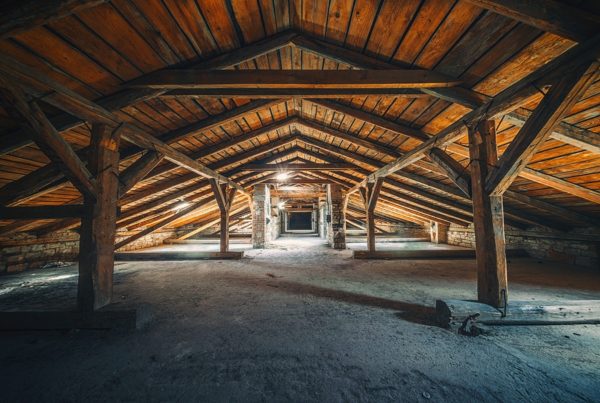
The leaves are changing colors and there’s a chill in the air. Finally! A break from the heat. And while most of us are looking forward to the cooler weather, the change in temperature also means changes in your home. As the weather cools off, it becomes more difficult to regulate your household temperature. And as your heating and cooling system works harder to control the temperature, the increased usage translates into increased utility bills. The is also prime time for wildlife and pests to seek shelter and food inside your home!
Thermal Accoustical Pest Control insulation (TAP) is energy star-rated attic insulation made of 87% recycled newsprint. TAP insulation helps regulate the temperature in your home by keeping them consistent throughout all four seasons of the year. For example, TAP keeps warm air inside and cold air outside during the winter months. By reducing the energy needed to heat and cool your home, utility bills costs can be lowered by up to 30%!
As an added bonus, TAP is treated with borates – a natural pest control product, providing permanent pest protection against roaches, ants and other unwelcome pests in your home. TAP insulation is also treated with a flame retardant that helps limit the spread of fire.
Install TAP insulation in your attic to get these benefits, not only this winter but throughout the rest of the year: